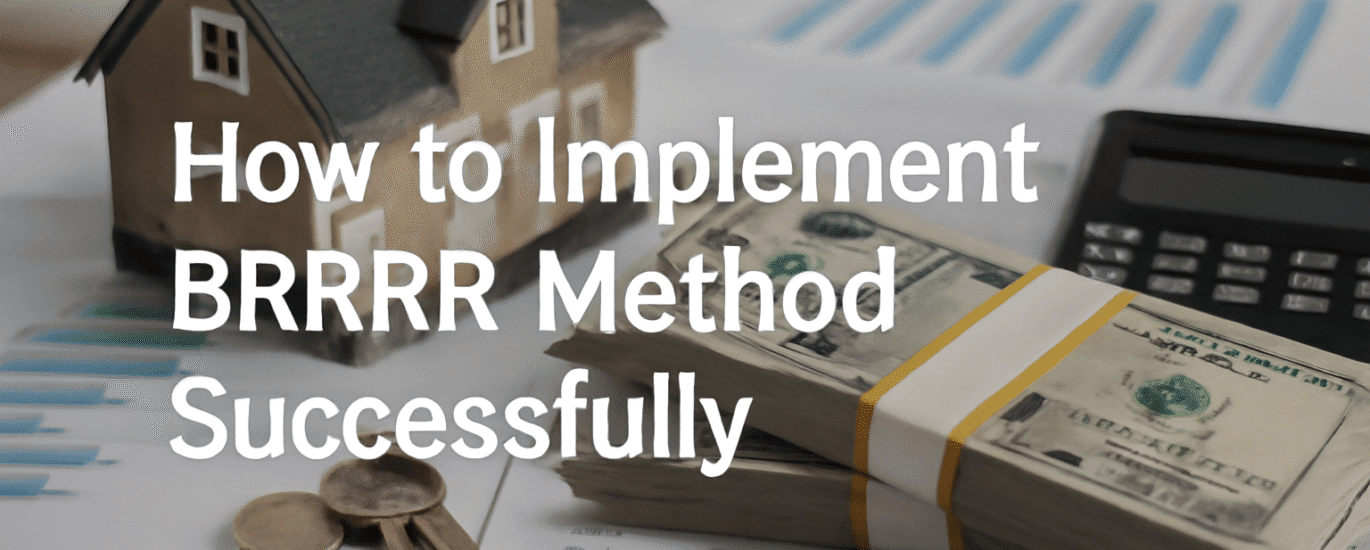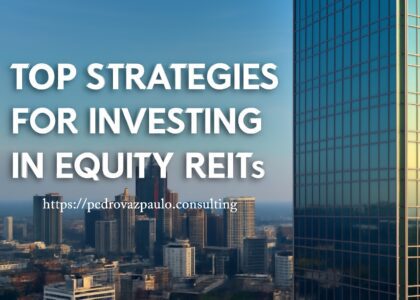The BRRRR method — Buy, Rehab, Rent, Refinance, Repeat — is more than just a popular real estate investment strategy; it’s a formula for rapidly growing a real estate portfolio with limited upfront capital. This method allows investors to leverage equity in properties and generate cash flow without tying up excessive amounts of money in each deal. Whether you’re an experienced investor or just starting out, understanding how to implement the BRRRR method effectively can accelerate your journey toward long-term wealth.
In this guide, we’ll break down each step of the BRRRR process in detail, covering everything from finding the right property to scaling your investment portfolio. Along the way, you’ll gain actionable insights on how to avoid common pitfalls, maximize your returns, and build a sustainable real estate empire.
If you’re interested in a more passive approach, consider exploring REITs as an option for diversification and income generation through real estate.
Step 1: Buy – Identifying the Right Property
The first step in the BRRRR method is to find a property that is undervalued but has strong potential for appreciation and cash flow. The key here is to buy smart. Your focus should be on properties that offer a high return on investment (ROI) through equity buildup and potential rental income. Here’s how to start:
1.1 How to Find Undervalued Properties
The secret to successfully implementing the BRRRR method starts with the property acquisition. Finding undervalued or distressed properties is crucial to making the strategy work. These properties can be bought at a lower price, allowing you to leverage the renovation phase to add value and build equity.
- Market Research: Start by studying local real estate trends and focusing on areas with growing rental demand and potential for price appreciation. Use property valuation tools and check for properties listed below their market value.
- Foreclosures and Auctions: Distressed properties, like foreclosures, bank-owned properties, or short sales, often sell for less than market value. These are prime candidates for the BRRRR method.
- Off-Market Deals: Networking with real estate agents or using direct mail marketing to contact property owners can also uncover properties that aren’t listed publicly. This approach can lead to better deals and less competition.
- Property Inspection: Always conduct a thorough property inspection. Even though the goal is to find a fixer-upper, don’t ignore potential structural issues like foundation problems, roofing issues, or plumbing concerns that could eat into your rehab budget.
1.2 Financing Your Purchase
Once you’ve identified the right property, it’s time to look at financing options. Traditional loans, hard money loans, and private lenders are all viable options, depending on your strategy and the level of risk you’re willing to take.
- Traditional Financing: Conventional mortgages are often the go-to choice for investors purchasing single-family homes. However, the downside is that you’ll need to put down a significant down payment and deal with longer approval processes.
- Hard Money Loans: These are short-term loans from private lenders. They’re useful for quick property purchases and typically have fewer qualification requirements than traditional loans. However, they come with higher interest rates, so it’s crucial to ensure your rehab and refinance strategy can support these costs.
- Private Lending: If you’ve established relationships with private investors or individuals, private money loans can offer more favorable terms and faster access to capital.
Step 2: Rehab – Renovating to Add Value
The rehab phase is where most of the magic happens. Renovating a property efficiently and within budget is critical to making the BRRRR method work. This is where you’ll turn an underperforming property into a valuable, income-producing asset.
2.1 Planning Your Rehab
When planning your renovations, focus on areas that will provide the highest return on investment. Kitchen remodels, bathroom upgrades, and improving curb appeal are typically high-impact areas.
- Cost Estimation: Make sure you’re aware of the rehab costs before you begin. Budgeting correctly is vital to ensuring you don’t run into financial trouble during the process. Always leave a cushion for unforeseen expenses.
- Value-Add Renovations: Not every improvement adds the same value. For example, upgrading kitchens or bathrooms can yield a high return, while adding a pool or high-end features might not generate significant returns unless you’re in a very specific market.
- Stay Focused on Rentability: Since your end goal is to rent the property out, focus on improvements that will appeal to tenants. For example, investing in energy-efficient appliances or installing washer-dryer hookups can significantly increase the attractiveness of your rental.
2.2 Managing the Rehab Process
Managing the rehab project efficiently can make or break the profitability of the BRRRR strategy.
- Hiring Contractors: Choose reliable contractors who have experience with rental properties. Don’t go for the cheapest option; instead, focus on quality and a proven track record of completing projects on time and within budget.
- Monitor Progress: Keep a close eye on the project’s progress. You should be actively involved to ensure the work is done as planned and on schedule. It’s important to stay ahead of any issues that may arise.
- Stick to the Plan: Avoid making unnecessary upgrades that won’t provide an adequate return on investment. The goal is to make the property attractive enough to rent out at a profitable price, without overspending.
Step 3: Rent – Getting Tenants and Generating Cash Flow
Once your property is rehabbed, it’s time to rent it out and begin generating income. The ability to manage your tenants effectively is critical to ensuring consistent cash flow.
3.1 Screening Tenants
Good tenants are the cornerstone of a successful rental property. A tenant screening process that includes credit checks, background checks, and verifying rental history will help you identify reliable tenants who will pay rent on time and take care of the property.
- Rental Price Strategy: Set a competitive but profitable rental price by analyzing market rent for similar properties in the area. Overpricing will lead to vacancies, while underpricing will reduce your overall cash flow.
- Lease Agreements: Use well-drafted leases that clearly define terms, payment due dates, and maintenance responsibilities. A solid lease agreement will protect both you and your tenants.
3.2 Maximizing Rental Income
Once tenants are in place, focus on maintaining the property and ensuring long-term profitability.
- Maintenance and Upkeep: Proactive maintenance will help keep tenants satisfied and reduce costly repairs. Respond promptly to maintenance requests to ensure tenants stay long-term.
- Minimize Vacancies: Retaining tenants is key to maintaining cash flow. Offer incentives like minor upgrades or quick response times to tenant requests to keep them satisfied and reduce turnover.
Step 4: Refinance – Pulling Equity and Growing Your Portfolio
The beauty of the BRRRR method is that you can pull out your equity once the property is rehabbed and rented. This is where the magic of the method really happens: you refinance the property to get your initial capital back and use it to purchase another property.
4.1 The Refinancing Process
When refinancing, you’ll want to have the property appraised to determine its current market value, which should reflect the improvements you’ve made.
- Cash-Out Refinance: This is the most common refinancing method used in BRRRR. You refinance for more than your original loan and pocket the difference, which you can then use to fund your next property.
- Loan-to-Value (LTV) Ratio: The lower the LTV ratio, the better. Typically, lenders want the LTV ratio to be under 80%. Ensure your property has appreciated enough to meet this threshold.
- Refinance Strategies: Shop around for the best refinancing terms. If you’ve worked with private lenders or hard money lenders initially, now is the time to switch to a more favorable conventional loan.
4.2 Using Equity to Scale
The key to success with the BRRRR method is using the equity you’ve built through the refinance process to purchase additional properties. This creates a cycle of growth, where each property is refinanced to fund future investments.
Step 5: Repeat – Scaling Your Real Estate Portfolio
Once you’ve successfully completed the first BRRRR deal, it’s time to repeat the process. The BRRRR method is designed for scaling your real estate investments by recycling your capital into new deals.
- Automating Your Systems: As you scale your portfolio, consider hiring property management to handle day-to-day tasks, allowing you to focus on acquiring more properties and managing your finances.
- Diversifying Property Types: While it’s good to focus on single-family homes early on, as your portfolio grows, you may want to consider multi-family units or commercial properties to maximize rental income and equity appreciation.
- Expanding Your Financing Network: As you expand, you’ll need to work with different lenders and private investors to fund larger deals.
Conclusion: Mastering the BRRRR Method
Successfully implementing the BRRRR method requires a well-executed strategy and a strong understanding of both the financial and operational aspects of real estate investing. By following the Buy, Rehab, Rent, Refinance, Repeat process, you can rapidly grow your real estate portfolio, leverage equity, and generate long-term wealth.
Whether you’re just starting or looking to scale your investments, the BRRRR method provides a clear roadmap for success in the real estate market. With careful consulting, planning, smart investments, and the right financing, you can use the BRRRR strategy to achieve your financial goals and build a robust, profitable real estate portfolio.
Ready to start using the BRRRR method? Schedule a free consultation today to discuss how you can leverage this strategy to grow your real estate portfolio. Let’s turn your investment goals into reality with Pedrovazpaulo.











